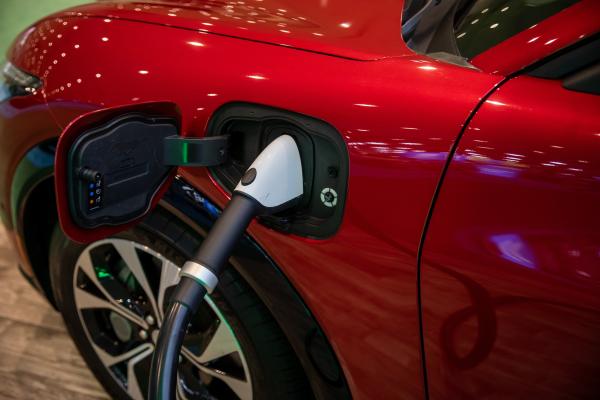Automakers appear to have had an awakening last week: Electric vehicles are the future, and if they want to continue selling cars, they have to think beyond the car. I’m not talking about subscriptions, though; I’m talking about charging.
For years, major auto manufacturers were happy to leave the infrastructure to someone else. Tesla was the lone exception, building a globe-spanning network of speedy and reliable chargers that have placated range-anxious car shoppers who have bought the company’s EVs in droves. Other automakers, though, failed to connect the EV charging experience with EV sales. Perhaps it’s because infrastructure is unfamiliar territory. Or maybe they actually weren’t that interested in selling EVs.
Whatever the case, automakers’ recent come-to-Jesus moment culminated in an announcement last week that seven of the largest would be forming a joint venture to build a massive charging network across North America.
Consisting of no fewer than 30,000 charge points offering both Combined Charging System (CCS) and the North American Charging Standard (NACS) connectors, the as-yet-unnamed network promises to be a true rival to Tesla’s Supercharger and the Volkswagen diesel settlement-funded Electrify America.
Sounds like a step in the right direction.
For one, the consortium is sufficiently ambitious with its plan of 30,000 charge points. The world is going to need a lot more fast chargers in the coming years, that much is clear, and the recent deals automakers signed with Tesla granting Supercharger access won’t be enough. Tesla alone will have to double the size of its network in just three years if it wants to maintain the same level of service its customers enjoy today. The Supercharger deals bought the other car companies a bit of breathing room, but if they’re going to hit their sales targets, they’ll need more than just a few thousand Tesla chargers to pull it off. The consortium is aiming high, which is exactly what’s needed.
Also, it appears that automakers have been listening to customer complaints about the sad state of fast-charging today. They promise that the new network “will provide reliability, high-powered charging capability, digital integration, appealing locations, various amenities while charging, and use renewable energy.” Point for point, the announcement addresses nearly every issue in our EV fast-charging bill of rights. (Perhaps some executives are TechCrunch+ readers? If so, drop me a line. I have thoughts.)
But there are plenty of reasons to remain skeptical.
Automakers don’t exactly have the best track record of delivering on their promises, especially when it comes to electrification. GM, a consortium member, has repeatedly promised a flood of new electric models only to delay their introduction. Nissan, which is notably absent from the consortium, once promised it would sell 1.5 million EVs by 2016. Tesla promised a $35,000 Model 3, and Ford promised a $40,000 F-150 Lightning, both of which were practically unavailable. None of that instills confidence.
Nor does the fact that the whole thing sounds like it was cooked up in a couple weeks. Perhaps marketing departments were looking to shore up their companies’ EV bona fides while their electric offerings catch up with customer demand. That certainly is the cynical take, but the press release doesn’t make the endeavor feel fully baked. Hell, the joint venture doesn’t even have a name yet.
The new network’s goals are similarly vague. Apart from the mention of 30,000 charge points, it doesn’t offer any other hard numbers even for something as basic as charging speeds.
Then there’s this: “A select number of flagship stations will be equipped with additional amenities, delivering a premier experience designed to showcase the future of charging.” A couple notes: A “select number of stations” can be as few as two. And to which future are they referring? Because according to the press release, the joint venture won’t be formed until later this year. Not exactly shovel ready. The first stations may be scheduled to open next summer, but it’ll be years before the network is of any consequential size. Consumers may expect the “future of charging” to be available by the end of the decade, but in the automotive industry, 2030 is practically tomorrow. A mismatch in expectations is seldom good news.
The press release also omits any mention of money, though The Wall Street Journal reported that the seven companies will invest a collective $1 billion, maybe more. Unless they have plans to add to the total, it’s laughably small. Electrify America has $2.45 billion in funding, and it has about 3,800 charge points (many of which are broken at any given time) built over seven years — an eighth of the new network’s goal. A billion isn’t bad, but it’s a drop in the bucket for a consortium with a collective market cap of $392 billion. If they’re serious, they’ll need to multiply that billion by a lot.
Lastly, what took them so long?
That question is actually pretty easy to answer. If automakers had been serious about EVs, they would have started work on a fast-charging network of this scale years ago. Tesla’s Supercharger network is over a decade old, and its pivotal role in moving electric metal hasn’t exactly been a secret.
The new venture suggests that seven automakers have maybe (maybe!) seen the light. It’s a good start, but it needs a lot more details, commitment and funding before anyone should take them seriously.
